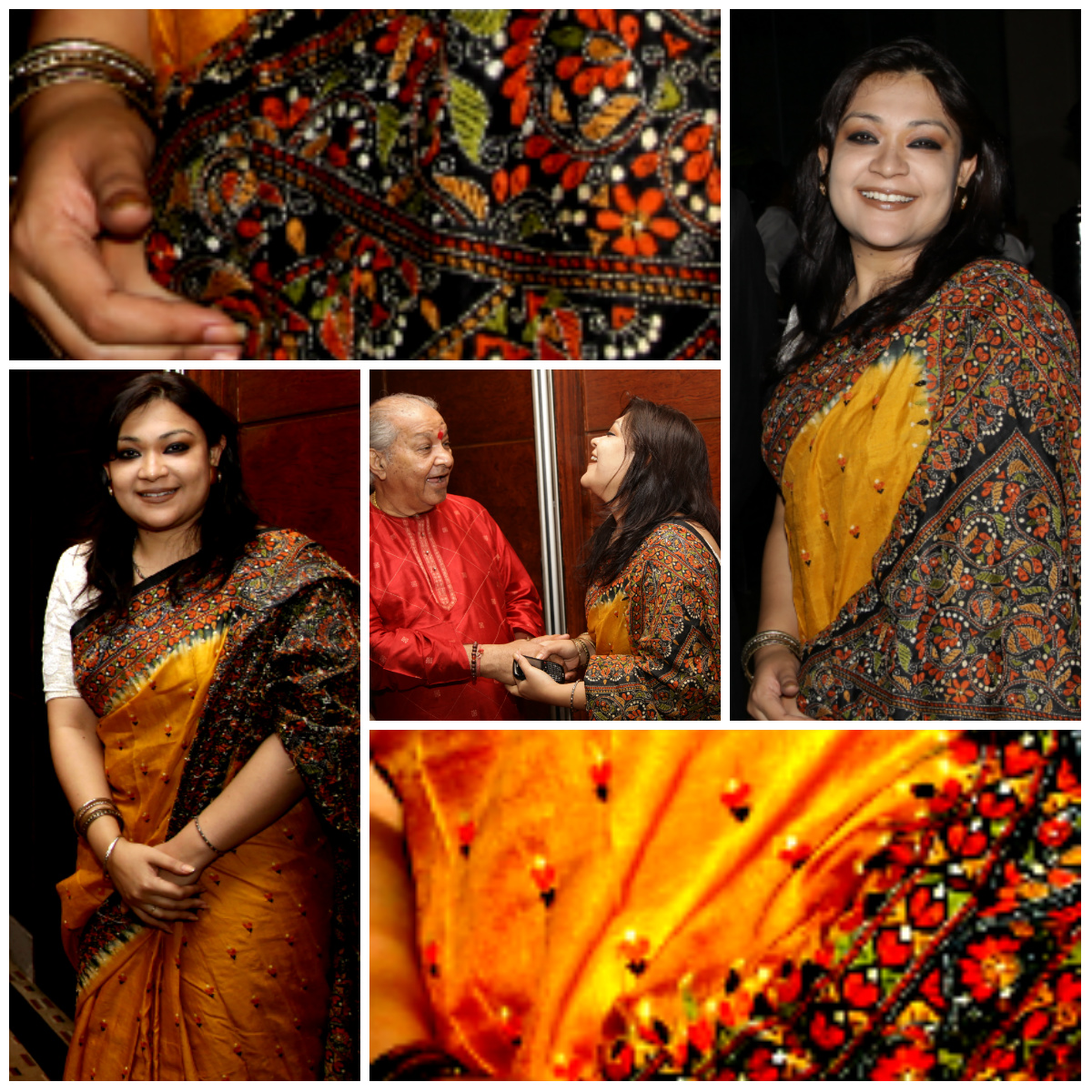Golden moments with KANTHA- O- KAAHINI
Participating in #100sareepact from Bengal without a Kantha story would have been an incomplete journey!
Kantha story
Kantha is originally from Eastern part (especially West Bengal) of India and Bangladesh. The use of kantha is popular in “Kantha sarees” traditionally worn by women in Bengal.
Kantha stitching is also used, to make simple quilts, commonly known as Nakshi Kantha.
Women in Bengal typically use old saris and cloth for this most popular form of embroidery that tops the shopping list for tourists visiting Bengal, specialty of Bolpur of West Bengal.
Initially the traditional form of Kantha embroidery was done with soft dhotis and saris, with a simple running stitch along the edges. Depending on the use of the finished product they were known as Lepkantha or Sujni Kantha.
Saree Story
Often my sarees have a bit of thread work here & there.
I love these artistic touch ups!!
But considering a real Kantha saree, this was my first purchase from none other than Sapna aunty!
I still remember she called me one day and expressed to show one saree, if am interested to buy.
Till date she believes this is one of her all-time favourite and beautiful creations.
The golden yellow tussar silk is covered with neat, dense, full body kantha work that took almost 8months to finish. I have often draped this gorgeous craft in special occasions.The combination with black and work with orange/black/green portrays an ultimate art piece.
Till date, the favourite and the most memorable moment with this saree is the day, when I got the chance to host Pandit Hariprasad Chaurasia for a musical event; I will keep this as a blessing when he interacted with warmth and shared candid moments.
36/100 of #100sareepact is dedicated to my first Kantha saree, which vibrates a wonderful energy and constantly gives a positive vibe.
Saju & Rupai Story
To add a punch in the climax of the story, I would wish to believe there exists no Bengali of our generation who has never got exposed /read Nakshi Kanthar Math or Nokshi Kanthar Math (Bengali: নক্সী কাঁথার মাঠ, meaning “The Field of the Embroidered Quilt” published in 1928) (https://en.wikipedia.org/wiki/Nakshi_Kanthar_Math ) by Jasimuddin.
To read the poem in Bengali click (https://priyokobita.wordpress.com/2011/12/09/nokshi-kathar-math-14/#more-1433)
Even at this moment when I typed for details and read the story of Rupai and Saju again, the keyboards turned blurred and a lump choked my throat.
I am thankful to Almighty and my parents, for whom I believe, I still have these precious & uncommon feelings stored in my heart despite living in this synthetic world.

